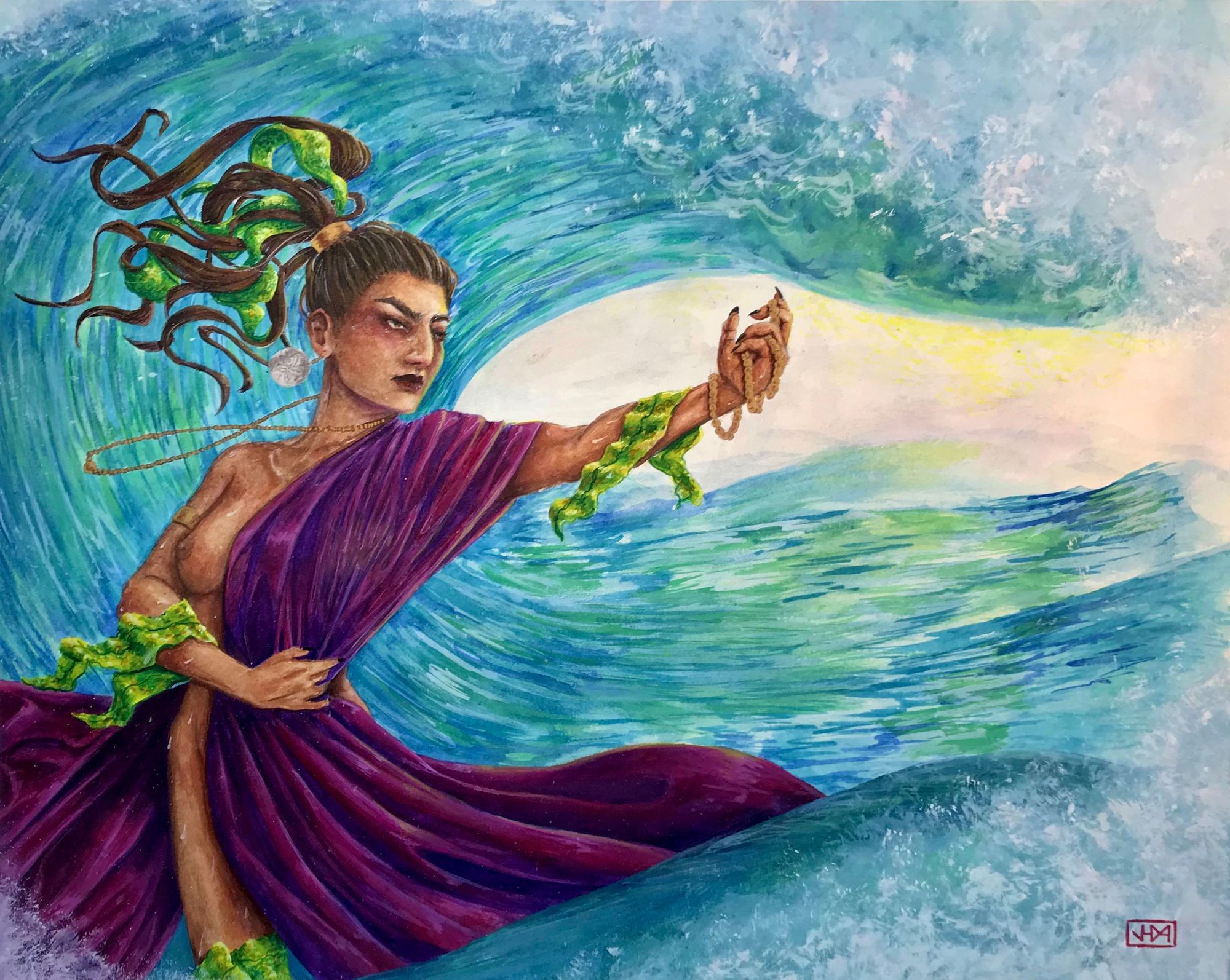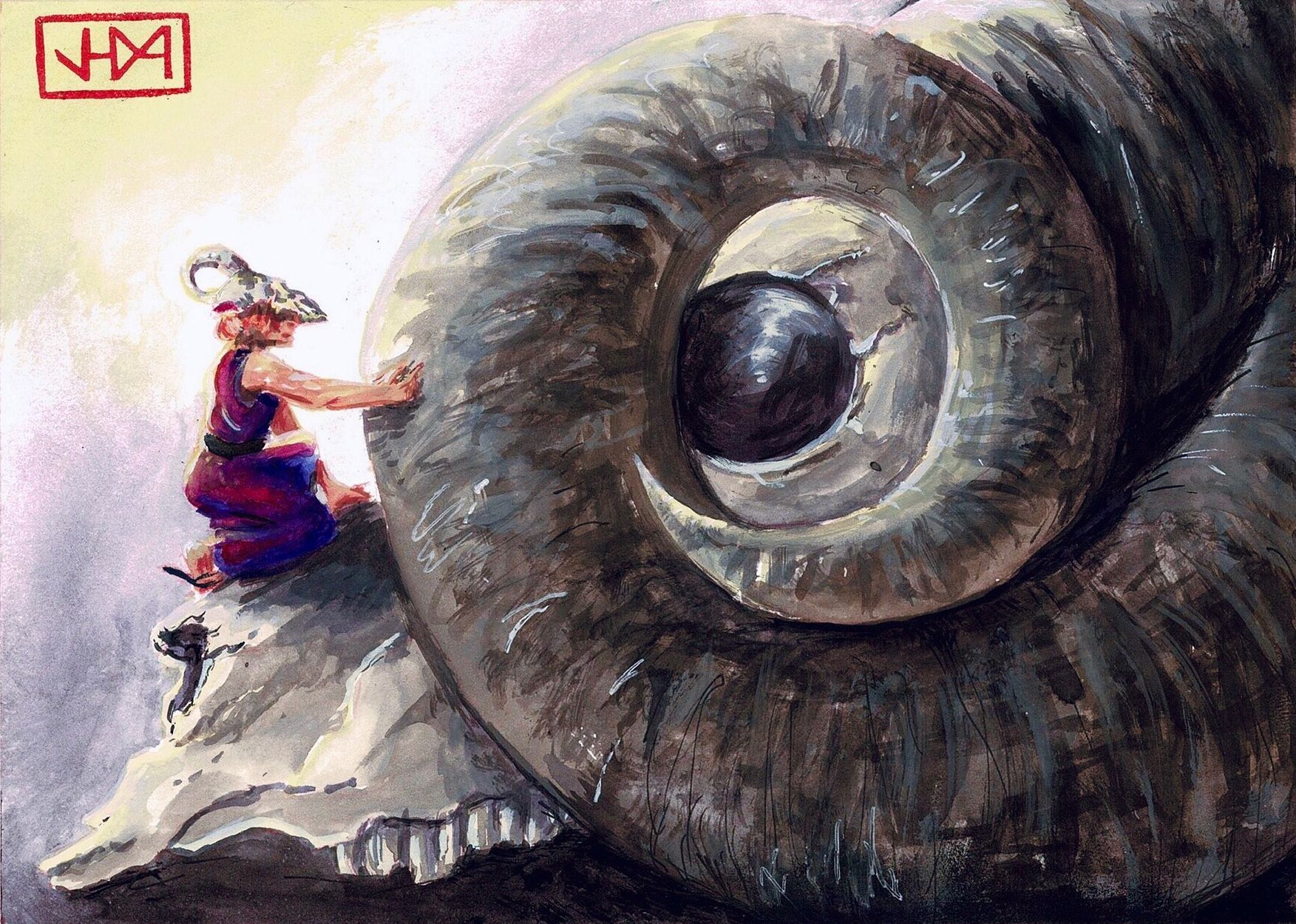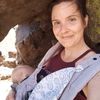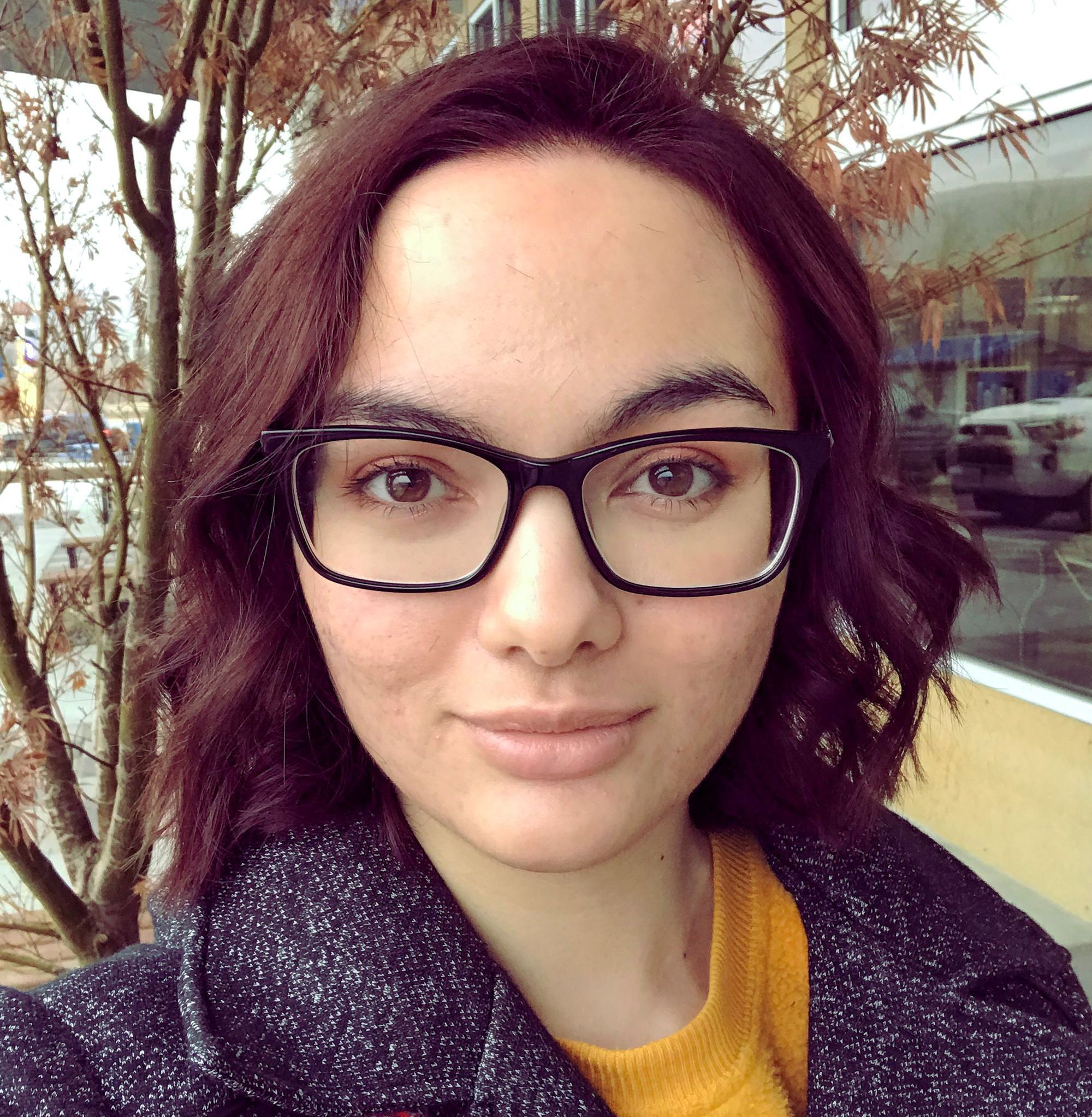Where were you born? Where did you grow up?
I was born in Everett, Washington and my family moved to Richland when I was five. I don’t remember much about my life before moving as most of my formative years were spent here in the Tri-Cities.
Did you always know art would be an important part of your life? Or was there a specific moment in time where you realized art was an integral part of your identity?
I entered my first art show on a whim. I saw the call for art by chance, at midnight, a couple of minutes after it had been posted, and thought, Why not? That show, I think, is really the turning point for me. I’ve been drawing since I was young and got into digital art when I was around 14, but it was after that first show, when I was invited to submit for a DrewBoy show, I started realizing how much I actually enjoyed making art—making things that other people could experience. For the past couple years, art has been my main focus, and it’s been wonderful to find new and more effective ways of expressing my thoughts, feelings, and stories.

Can you recall a specific piece of art that shifted your perspective in a significant way? Or stopped you in your tracks?
There’s only one thing that I think truly stopped me in my tracks. A while back I bought a book called Life in Color, and it’s a book of photographs by National Geographic. It’s broken into chapters based on color, and I bought it specifically for color palette inspiration. The photo that really stopped me in my tracks is at the very end of the brown chapter. The photo is by Montgomery Gilchrist, taken in Patagonia, Chile, and its caption is “A lone guanaco stands guard over its herd in Torres del Paine National Park.” Tall mountains, misty sky, all framing a regal guanaco staring off into the distance—it’s breathtaking.
Tell us a bit about your artistic process.
My approach to art combines an appreciation of the spontaneous and a need for linear thought. With an ever-evolving style and method, my art often reflects not only thoughts and feelings but what I personally wish to be looking at, as well.
I love that your process is a combination of spontaneous and linear thought. Tell me more about that!
The best way to explain it is that I really like lists. Using lists and charts and tables to organize things makes my brain very happy. In the same vein, meticulously planning and executing very exact and precise ideas, as I do with my linoleum work, is so incredibly satisfying. On the other hand, all that planning can be a bit exhausting if you do it all the time. Going into a piece with no plans and using a permanent medium, like ink, can be freeing. I think I’ve found a great balance in my work where I can create art that satisfies my list-loving brain and then de-stress with something that still keeps me moving forward.
What is your preferred medium?
My primary mediums at the moment are linoleum carving and printing, gouache, and ink.
How do you select what medium you will use on a given piece? Does the medium tend to drive the content, or does the content decide your medium?
Unless I’m doing some sort of spontaneous, abstract-y, ink painting, the mediums I use depend on my sketch. Sometimes I’ll do a sketch, intending it to be carved in linoleum, and then I’ll see a little detail partway through, or maybe the feel of it is a little different than intended, and I’ll end up painting it. Same goes for the other way around. I feel like being flexible about what medium I use and how I execute any particular piece is something that really helps me express things to my best ability.
Can you tell us a bit about your current project?
I’m currently finishing up with a carving project with Dionysus as the subject. All that’s left is to print the block, and I’m really looking forward to the results. In the meantime, I’ve started putting down a sketch for a gouache painting. It’s early days still, but the concept surrounds an eerie, cave-dwelling, root monster and the explorers that woke it up. Big concepts. Just gotta put them on paper.
I love that you work with these larger-than-life concepts. Where do your ideas usually come from?
Most of my ideas come to me while listening to music. Sometimes I’ll find inspiration from something I’ve watched, like a documentary or the odd TV show, but music has the biggest influence on me. It can be something as simple as the feel of the song, the title, or an interesting bit of harmony; tiny flickers of ideas can come from anywhere. I really enjoy taking those flickers, building them into full stories, and then making art out of them.
You shared that your art often reflects your thoughts and feelings. Do you prefer your intention be known to the viewer or do you like to keep the content open for interpretation?
The things that I make are made with myself in mind, based on the things I see and the things I hear. My art might feel completely different to someone else because the context in which they see it is completely different. It can be fun to explain the story behind a piece, but I don’t think every piece needs explanation to be enjoyed. If someone sees my art and it makes them feel something or maybe reminds them of a dream they had, even without my context, they’re experiencing the art in the same spirit that I made it in. I think, as an artist, what I show people is like the last sentence of a book. The chapters leading up to that last sentence are different for everyone, myself included, and I think that’s pretty neat.
Tell us more about your technique.
My technique is both extensively planned and incredibly spontaneous. If I’m doing an ink painting, I tend to just put the ink on paper, no prior planning. With pretty much everything else, though, I like to get as much planned out as possible before. I do a digital sketch, refine the sketch with pencil and paper, and then transfer the finished sketch to whatever surface I’m working on. At that point, once all the major decisions have been made, I start work on the final product. I tend to work fairly quickly to avoid letting myself overthink what I’m making.

How has your practice changed over time?
Over the years my practice has changed pretty drastically. I started out doing fairly quick pencil drawings of the lead singers from my favorite bands and then moved to doing digital renderings of characters for stories I planned to write novels about. My art was, in my mind, a secondary focus. I started doing fanart for fun, put out maybe a piece per month, and I was pretty satisfied with that. Then, a couple years ago, with the discovery of how much I enjoyed ink painting, I realized that, as much as I liked the idea of writing a novel and maybe throwing in a couple of fun illustrations as a chance to do some art, it wasn’t as fulfilling as focusing solely on painting.
The most recent evolution came just over a year ago. I really enjoy painting, and it’s a great medium for some things, but last year I learned about block printing and absolutely fell head over heels. There was seriously an, “Oh! This is what I’ve been looking for” moment. Nowadays my art is my main focus, and I don’t see that changing any time soon.
What impact has this year had on your practice?
The biggest change in my process has been with my mindset. With things so up in the air, it’s been really hard to keep motivated. At the very beginning of the year, in the oh-so-distant pre-pandemic times, I was working to get my life to the place I wanted it to be and I was doing a damn good job of it. I actually had summer plans for once! I was on a roll. But, y’know, 2020. I lost momentum pretty quickly.
I’ve had a lot of time to think this year and, while my creative process hasn’t changed, this year has been a lot of learning how to be my own motivation—holding on to what I can control and pushing myself to keep moving forward. Making art makes me happy, and realizing that has done absolute wonders.
Do you have any rituals or routines that help you get into ‘the zone’ when you are experiencing resistance, or a creative block?
Unless I’m sick or in the middle of a project which doesn’t allow me to, I sit at my desk. When I’m between projects or straight-up art-blocked, I still sit at my desk for a couple hours after breakfast even if it’s just to doodle or read. I’ve actually shaped my routine to specifically ensure that I stay at my desk for at least an hour. It probably sounds a little restrictive but, because of this routine, more often than not, just sitting at my desk is enough to get my brain kicking into gear.
What inspires you?
I’m inspired a lot by nature—things like trees and flowers. Lately I’ve been listening to a lot of classical music. I can’t tell specifically how it’s been inspiring my art but, at the very least, it’s nice to listen to while I work.
Does creating feel like a solitary or communal experience for you?
For me, creating is pretty solitary. It’s always fun to connect with other artists—to share ideas, get feedback, and generally just support one another. I think having a community of artists around you can be a great motivation, and that itself is a big part of creating, but at the end of the day, I make my art alone at my desk, and I make it for myself.
What would you tell an aspiring artist?
The only advice I can think of is to not be afraid of being scared. I don’t know how much sense that makes but, like, there are going to be times when you’re scared your art isn’t improving or scared that maybe you’re dedicating your time toward something that will never go anywhere. You might get scared that your art isn’t as good as someone else’s, or things might actually be going really well, and the pressure and expectations are what scare you. And I don’t think you should be afraid of that feeling or let it stop you. Every time you get scared and every time you work out how to overcome it, you’re growing as an artist and as a person. So just… keep at it.
How can our community better support artists?
Our community has an incredible art scene, and there are already a ton of local resources for artists. I think it’s important to note that places like Confluent, Art on the Columbia, and the Gallery at the Park frequently (when not affected by things such as a global pandemic) offer classes and workshops for creatives. DrewBoy Creative frequently creates opportunities for artists to display and/or sell their work and, like many of the previously mentioned places, have volunteer opportunities on their websites.
That said, in order to better support artists in the community, accessibility is key. Creating opportunities for the community to donate materials to artists who would otherwise be unable to buy them, ways for artists to easily find available grants and scholarships, and community spaces with art of all kinds at the forefront are some ways I think we can foster a community that not only supports artists but encourages a productive dialogue between artists and the community.
Ashleigh Rogers is an Artist and art instructor living in Richland,WA with her husband and three children. Find her on Facebook or Instagram.


